The Magdalen Chapel is tucked away on the Cowgate, one of Edinburgh’s less glamorous Old Town thoroughfares.
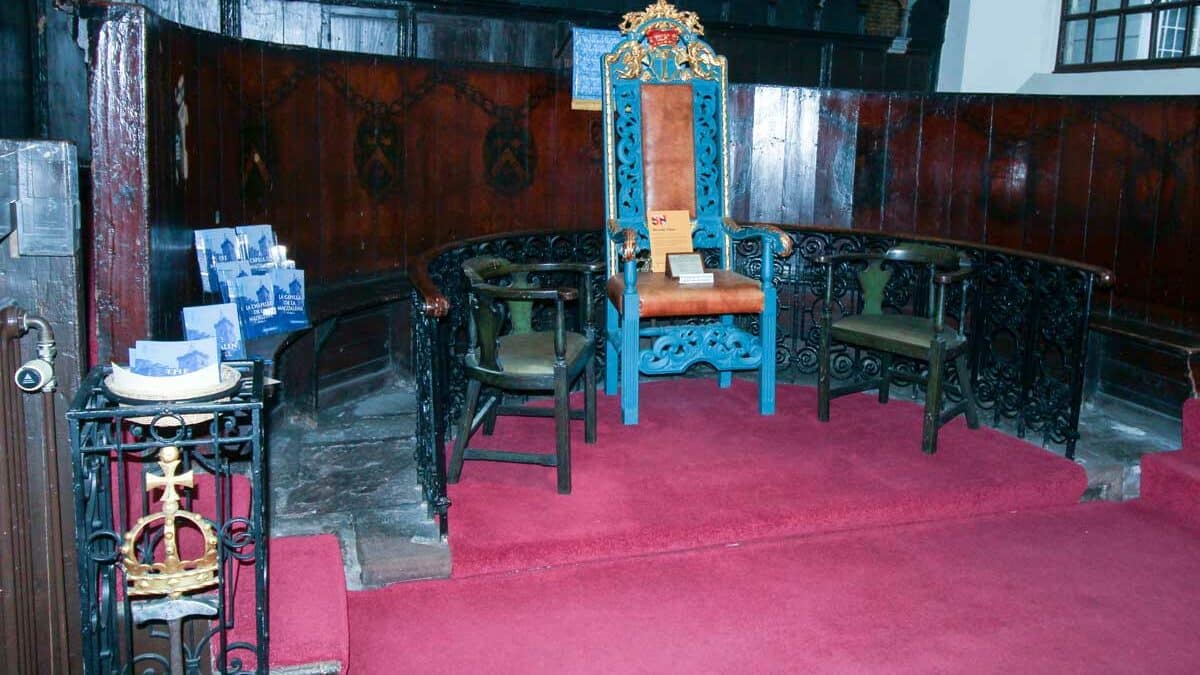
The history of Magdalen Chapel
The Magdalen Chapel was the last Roman Catholic chapel to be built (1541-44) in Edinburgh before the Scottish Reformation of 1560.
While the building’s façade isn’t particularly impressive and the interior is modest, the history surrounding the Chapel is fascinating.
Edinburgh’s Cowgate was once a fashionable and aristocratic area
Although today’s Cowgate has lost much of its lustre, appearing particularly gloomy as it runs under one of the arches of George IV Bridge, it was once, like the nearby Grassmarket, the site of a number of markets selling hay, straw, horsemeat and other commodities.
Cowgate’s royal connections
James V lodged here in 1528, as did Dr John Naysmith physician to James VI and his son-in-law John Livingston who was the Gentleman of the Bedchamber to Charles I.
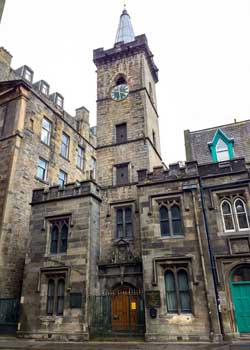
Another resident was Cardinal Beaton, Archbishop of St Andrews, from 1509-1522 and later Glasgow until 1546.
Today the Cowgate, less than a mile from the Royal Mile and all its visitor attractions, is peppered with bars, clubs and student hostels.
It’s a popular spot during the Edinburgh Fringe Festival.
Bearing in mind the rising influence of Martin Luther and the spread of Protestantism in Europe, there must have been those who questioned the opening of another Catholic chapel in Edinburgh.
The plans for Magdalen Chapel
The plan for the Chapel was initially conceived by Michael Macquhane (MacQueen), a man described by Hugo Arnot in his History of Edinburgh (1779) as a prominent member of the local community, a money lender and burgess of Edinburgh since 1492.
Interestingly, Arnot discusses a nearby Maison Dieu which he described as having fallen into decay and speculated that this may have been the motivation for the new foundation.
“In early times there existed in the Cowgate a Maison Dieu which had fallen into decay.”
Hugo Arnot
Macquhane’s name appears on a number of records – as a witness in a land transfer on the Cowgate in 1501 and as a merchant selling all manner of goods to the royal household.
Whatever Macquhane’s reason for planning the Chapel, he set aside £700 for the purpose.
Unfortunately, his declining health meant that he never saw his plans come to fruition.
The Chapel’s original Foundation Charter, sadly now lost, says that he was, “greatly troubled with a heavy Disease and oppressed with Age, he esteemed it ane good Way to obtain Eternal Life, to erect some Christian Work, forever to remain and endure…”
After his death in 1537, his wife Janet (Jonet) Rynd continued his work.
Janet Rynd was born towards the end of the 15th century into a successful family of merchants and craftsmen.
St Margaret’s Chapel, Edinburgh Castle
Among her extended family were tailors, goldsmiths and cloth merchants. Others were important members of Edinburgh’s religious community including the chaplain of St Margaret’s Chapel in Edinburgh Castle.
Today this little chapel, built in the 12th century, is the oldest surviving building in the city.
While the importance of an influential family cannot be underestimated, she was in her own right an astute and capable businesswoman who owned her own booth with a number of notable clients including the king.
But following the withdrawal of a number of financial backers, there were immediate difficulties to overcome.
Faced with the possibility of cancellation, she contributed £2,000 of her own money to ensure the project continued. It was a huge sum of money in 16th century Scotland.
In late 1538, she purchased two plots of land on the south side of the Cowgate allowing not only the building of the Chapel but also a separate chaplain’s lodgings and hospital or almshouse to accommodate seven bedesmen (poor men).
To ensure their smooth running, she wrote a detailed charter about how the foundation should operate both during her life and after her death.
Although the bedesmen had a number of domestic duties to attend to, much of their day was spent on religious matters.
While “continually pouring forth prayers to Almighty God,” prayers were also said for the soul of Mary Queen of Scots, her mother the Queen Regent Mary of Guise and the founders and their families.
There were strict conditions of entry to the almshouse.
The bedesmen must be male, unmarried, over 60 years old and not convicted of any serious crime or immorality.
The chaplain too faced stringent conditions of employment. He was to be secular, not hold any other ecclesiastical position and be of good character.
For his work administering the hospital, he was paid the sum of 24 merks which was £16 Scots.
But should he persist in drunkenness, madness or brawling he would be replaced.
The Chapel was dedicated in the name of Mary Magdalene.
There are some suggestions that the idea for the name came from two sources.
One was the French princess Madeleine or Magdalene of Valois, the first wife of James V, the second was Mary of Guise, who the king married in 1538, following Madeleine’s death the previous year.
The Incorporation of Hammermen
In 1547, the Incorporation of Hammermen, one of the Incorporated Trades of Edinburgh, became the patrons of the Magdalen Chapel which they regularly used as their convening hall.
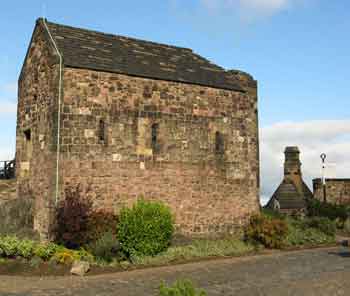
As the trade guild which regulated craftsmen working with a hammer, it included cutlers, goldsmiths, armourers, saddlers and blacksmiths.
They were, “men who wielded the hammer.”
But they were not just an Edinburgh institution, as many of Scotland’s other towns had their own trade bodies.
The Incorporation was a functioning organisation as early as 1477, the year one of their freeman masters endowed an altar to St Eloi, patron saint of goldsmiths and other metalworkers, in what is now St Giles’ Cathedral.
However, the earliest minutes of their meetings still extant, date to 1494, the year after their Seal of Cause (founding charter) from Edinburgh Town Council was awarded.
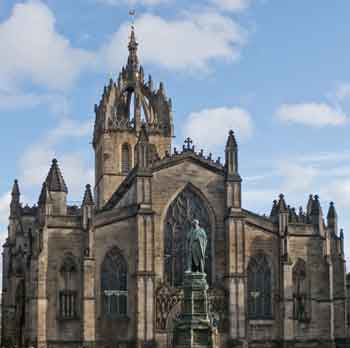
In addition, there are a number of manuscripts detailing their Kirkmaster’s Accounts for the years 1494 to 1585.
Together this valuable corpus gives today’s researchers vital historical information about not only the Incorporation of Hammermen but the turmoil in the years before and after the Reformation.
Why the Hammermen? Almost certainly because a number of Janet’s relatives were Hammermen.
With such a strong family connection there was perhaps a sense of ‘keeping the Chapel in the family’.
One notable member mentioned in the Burgh of Edinburgh records was Thomas Rynd, a well-known goldsmith who did business with the king on a number of occasions.
This included, in 1538, “when the king purchased his chains of gold, gold rings and other golden work to give as New Year’s gifts.”
However, there was also the small matter of a house in nearby Niddry’s Wynd being made available by the Hammermen for her private use. Although gaining entry seemed to involve removing the sitting tenant, she did eventually move in and was allowed to stay there until her death.
The story behind the house is intriguing if somewhat protracted, one documented in the records of the Edinburgh Hammermen.
But Janet decreed that should the Hammermen fail in their responsibilities, patronage should directly pass to her family – specifically William Rynd, who was probably her brother, and his male heirs.
Ultimately, they proved to be good patrons. Regular payments, which extended beyond Janet’s death on 4 December 1553 were made not only to the inmates of the hospital but for the building’s upkeep too.
In 1554, for example, they repaired the chimney, in 1556, they painted the Chapel and in the following year they constructed a “small house for keeping tabells and other things.”
Mary of Guise, eventually becoming Queen Regent of Scotland (1554-1560) was keen to ensure that young men could, “apply their whole minds to study…”
To this end she appointed several eminent scholars, paid from the royal purse, to give academic lectures in the Magdalen Chapel.
Mary’s wish was to model it on one founded in Paris by Francis I in the 1530s which later became the Collège de France.
One early commentator made the point that these lectures highlighted the need for a university in Scotland’s capital city.
Magdalen Chapel stained glass window
Although Mary of Guise never lived to see it, the University of Edinburgh was founded, originally as the Tounis College in 1582, just a little more than two decades after her death.
Subjects which included, Canon and Civil Law and the Sciences were taught by Alexander Sym. Later, in June 1556, Edward Henryson was appointed “to profess, teach and read within the burgh of Edinburgh a public lesson in Greek and the Laws…”
Today’s visitors are reminded of that ancient link between Regent and Chapel thanks to the only still intact pre-Reformation stained glass in Scotland.
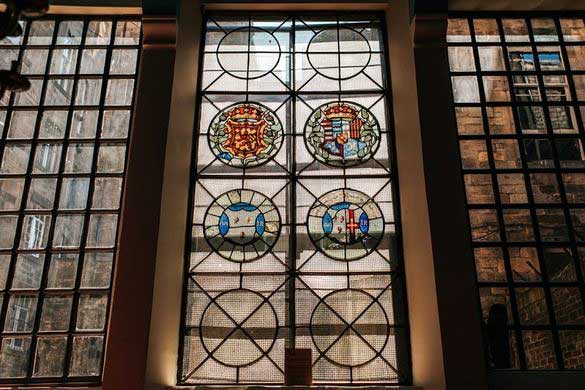
The glass in the shape of four shields represents the arms of (1) Mary of Guise, (2) the Lion Rampant, the Royal Arms of Scotland, (3) the arms of Michael Macquhane (4) the arms of Michael Macquhane together with those of Janet Rynd.
Scottish Reformation
The Reformation was a turning point in Scotland’s history but despite still having a Catholic queen, the Scottish Parliament abolished papal authority and John Knox was elected minister of St Giles’.
Although Catholic worship did come to an end at the Magdalen Chapel it was, unlike St Giles’ and other Catholic houses, left relatively unscathed, thanks, in some degree, to a number of Protestant Hammermen who had no desire to see the building damaged.
The Magdalen Chapel, like many Catholic places of worship, saw huge changes during the violent upheavals of the Reformation and the chaplain was replaced by a minister.
Church of Scotland
The building was the venue for the first assembly of the newly formed Church of Scotland on 20 December 1560. It’s possible that John Knox preached here, certainly his colleague John Craig did on a number of occasions.
However, It seems that because of the ‘disturbed state of the country’, the General Assembly of 1578 could not be held in the Tollbooth moving instead to Magdalen Chapel.
The discussions led by Moderator and distinguished scholar Andrew Melville were held around the Second Book of Discipline.
The Book laid out, among other things, his view that the Scottish Kirk received its authority from God and not the state.
The Assembly was a seminal moment in Presbyterian and wider Scottish history.
National Covenant
In 1638, the National Covenant drafted by Archibald Johnston of Warriston, Archibald Henderson, other nobles, lairds, lawyers and ministers, was signed by thousands of Scots of all social ranks.
It marked the beginning of yet another tumultuous period in Scotland’s history, one which stretched until the Glorious Revolution of 1689 and the joint Protestant monarchy of William and Mary.
Those who signed, known as Covenanters, wanted to declare their opposition to Charles I’s political and religious policies – this included the attempt to introduce the Anglican Book of Common Prayer.
Sitting in a corner of the Magdalen Chapel are three reminders of this terrible time.
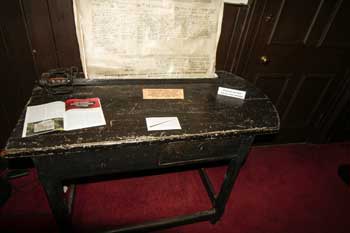
There is a simple wooden table used to lay out executed Covenanters ready to be dressed in their grave clothes.
Also a sword believed to belong to Covenanter soldier John Paton and a copy of the National Covenant, the original of which was signed in nearby Greyfriars Kirk.
Hanged in the Grassmarket
Over a hundred people were hanged in the Grassmarket during what became known as the ‘killing time’ as the government sought to suppress the movement.
Today a memorial to those Covenanters marks the spot where the gallows once stood.
Among those placed on the table was Archibald Campbell, 1st Marquis of Argyll who had first announced his support for the Covenanters at the General Assembly of 1638.
Following the Restoration, despite his wish for a reconciliation, he was arrested, tried and beheaded at the Edinburgh Tollbooth.
In 1661, while his head remained spiked on the Edinburgh Tolbooth his remains were brought to the Chapel to await transportation to the Campbell clan burial site in Kilmun, Argyll
Another who rested peacefully before his burial at Greyfriars Kirkyard was John Dick a young theology student, present at the Battle of Bothwell Bridge of 1679 where a Covenanter army was defeated by a force led by the Duke of Monmouth.
Although he escaped from the battlefield, over a thousand of his fellow Covenanters were captured and sent to the American colonies.
As he mounted the Grassmarket scaffold he proclaimed to the watching crowd, “I am come here this day and would not change my lot with the greatest in this world. I lay down my life willingly and cheerfully for Christ and His cause…”
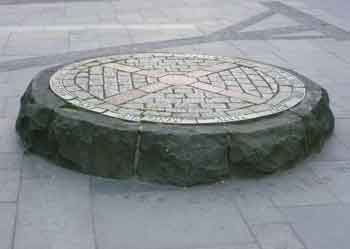
Glorious Revolution
At the Glorious Revolution the heads and hands of executed Covenanters, once gruesomely displayed at Edinburgh ports (city gates) as a deterrent to others, were gathered and brought to the Chapel.
The remains were subsequently interred in Greyfriars Kirkyard.
Following the Revolution, the Chapel became a place of worship for Edinburgh’s Episcopalians.
Later, during the 18th century, the Baptists chose the Chapel as their meeting place.
The Incorporation of Hammermen who owned the Chapel until 1858 is today a charitable organisation working on a range of worthy projects.
Additionally, they often fund awards to the top students of Edinburgh’s universities and colleges.
Magdalen Chapel: Deacon’s Chair
A tangible reminder of their importance and standing in Edinburgh, particularly in the early 18th century, is the Deacon’s Chair,
The impressively restored Deacon’s Chair, originally created by local craftsman Thomas Heron in 1708, takes pride of place within the Chapel.
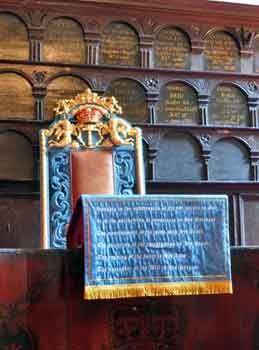
Its existence is a testament to the authority and stature of the Hammermen during the early years of the 18th century.
Scottish Reformation Society
Today the Magdalen Chapel is owned by the Scottish Reformation Society which exists, “to defend and promote the work of the Protestant Reformation in Scotland.”
Perhaps it’s fitting, at the end of this short article, to return to the life of Janet Rynd, a remarkable woman of her time and one of the original founders.
Mairi Cowan, Associate Professor at the University of Toronto in her book Death, life, and religious change in Scottish towns c. 1350-1560 said that the Chapel, hospital and associated buildings were, “in a very large part brought to fruition through her individual efforts as a widow… “
Perhaps it’s fitting that the only marked tomb in the Magdalen Chapel today, located immediately to the south of where the altar once stood, is that of Jonet [Janet] Rynd.”
In 1857, the Chapel was sold to the Protestant Institute for Scotland.
Today the Magdalen Chapel, completely refurbished in 1 992/93, is owned by the Scottish Reformation Society (SRS) a body designed to, “Defend and promote the work of the Protestant Reformation in Scotland.”
Further information about Magdalen Chapel
For more information to help you plan your visit, go to the official SRS website.